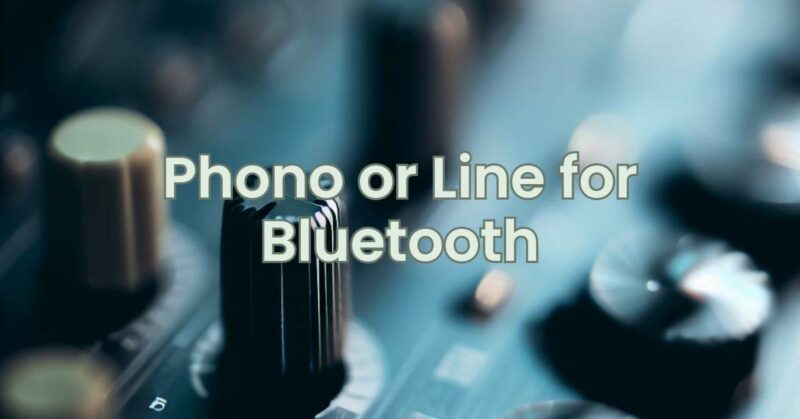With the rise in popularity of wireless audio devices, connecting a turntable to a Bluetooth-enabled speaker or receiver has become a common scenario. However, when it comes to connecting a turntable to a Bluetooth device, you may wonder whether to use the phono or line input. In this article, we will explore the considerations and differences between using the phono input and line input for Bluetooth connectivity, helping you make an informed decision for wireless audio playback.
Phono Input for Bluetooth:
- Compatibility Challenges: Using the phono input for Bluetooth connectivity can be challenging since Bluetooth-enabled devices typically output a line-level signal, not the low-level signal produced by a turntable’s cartridge. The phono input is specifically designed for turntables and requires the RIAA equalization and amplification to correctly reproduce the audio signal.
- Preamp Requirement: When connecting a Bluetooth device to the phono input, you will need a separate phono preamp or a turntable with a built-in preamp. The preamp will process the line-level signal from the Bluetooth device and provide the necessary equalization and amplification required for accurate playback on the turntable.
Line Input for Bluetooth:
- Compatibility and Convenience: Using the line input for Bluetooth connectivity is often the more straightforward option. Bluetooth devices typically output a line-level signal, which can be directly connected to the line input on an amplifier, receiver, or active speakers without requiring additional preamplification or equalization.
- Signal Quality: By using the line input, you bypass the RIAA equalization stage specific to the phono input. However, it’s important to note that Bluetooth audio streaming is generally compressed and lossy, which means there may be some compromise in audio quality compared to a direct analog connection to the phono input.
Considerations for Decision-making:
- Equipment Compatibility: Check if your amplifier, receiver, or active speakers have a dedicated phono input. If they do, connecting a Bluetooth device to the phono input will require additional equipment such as a phono preamp or a turntable with a built-in preamp.
- Audio Quality: If obtaining the highest audio quality from your turntable is a priority, connecting via the phono input with the appropriate preamp is recommended. However, if convenience and compatibility with Bluetooth devices take precedence, using the line input can be a viable option, even though there may be some loss in audio fidelity due to Bluetooth compression.
- Flexibility: Consider future expansion and compatibility with other audio sources. Using the line input allows you to connect various devices, not just Bluetooth-enabled ones, making it more versatile for your audio setup.
When connecting a turntable to a Bluetooth-enabled device, the choice between using the phono input or line input depends on several factors. The phono input requires additional equipment, such as a phono preamp or a turntable with a built-in preamp, to accommodate the line-level signal from the Bluetooth device. The line input, on the other hand, offers compatibility and convenience for direct connection, although audio quality may be compromised due to Bluetooth compression.
Consider your priorities, including audio quality, compatibility, convenience, and future expansion possibilities, to make the best decision for your specific setup. Whether you choose the phono input or line input for Bluetooth connectivity, enjoy the wireless freedom and convenience while indulging in your vinyl collection.

